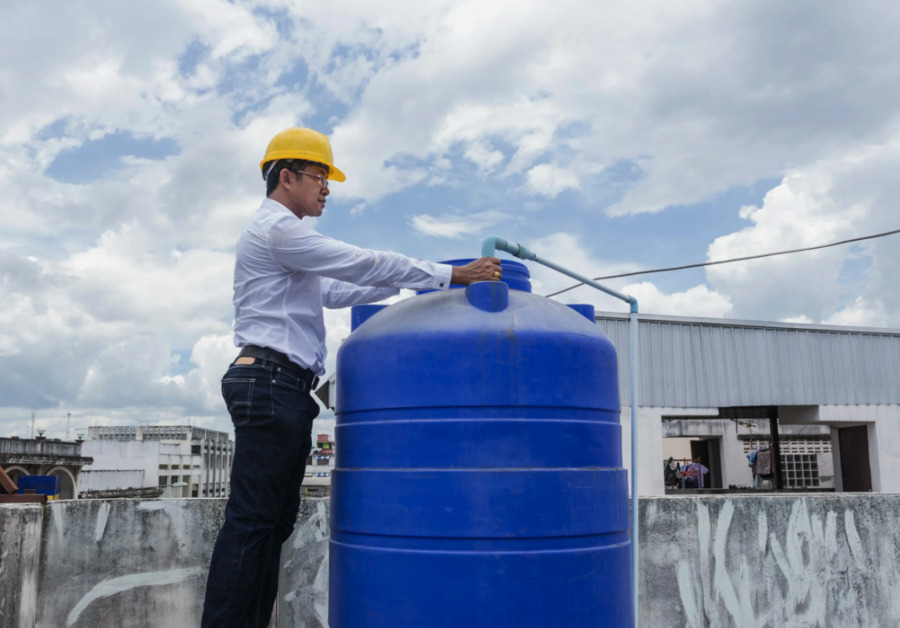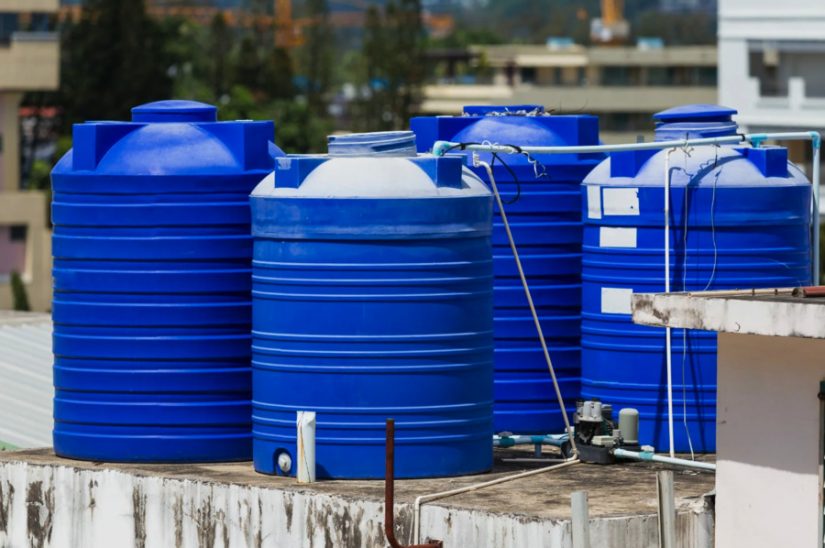The Essential Role of Water: Sustaining Life and Health
Water is often referred to as the lifeblood of our planet, a fundamental element essential to the existence and well-being of all life forms on Earth. This clear, fluid substance does more than just quench our thirst – it is an integral part of all ecological and biological processes, affecting everything from the smallest cellular actions to the largest ecological systems. Covering 70% of the Earth’s surface and making up about 60% of the human body by weight, water is crucial not only for survival, but also for the overall health and functioning of all living organisms.An important factor is the quality of water, which is free of harmful bacteria and impurities.It is important to regularly clean water storage tanks. if you live in the Middle East, pay attention to water tank cleaning companies in UAE.
Page Content
The Critical Importance of Water Quality
The quality of water is directly linked to human health and the sustainability of the environment. Drinking clean, safe water is essential for proper hydration, which is vital for maintaining organ function, aiding digestion, supporting cognitive function, and overall physical well-being. High-quality water helps prevent diseases and is key to maintaining general health. Water quality is determined by its chemical, physical, and microbial characteristics, and managing these aspects effectively ensures that the water is free from harmful pollutants and pathogens.

Microflora of Water: The Microbial World
Water’s microbial composition, known as its microflora, includes various types of bacteria, viruses, and protozoa. These microorganisms range from being benign or beneficial to potentially harmful:
- Denitrifying Bacteria: These beneficial bacteria play a critical role in the nitrogen cycle by converting nitrates into nitrogen gas. This conversion is essential to prevent the accumulation of nitrates in aquatic environments, which can lead to eutrophication—a process that depletes oxygen in water bodies and can kill aquatic life. While crucial for maintaining ecological balance, the activity of denitrifying bacteria needs to be carefully monitored in drinking water systems to avoid adverse health effects.
- Leptospira: Responsible for causing Leptospirosis, this bacterium can infect both humans and animals. It thrives in water contaminated with the urine of infected animals and can survive for extended periods under favorable conditions. Humans can contract Leptospirosis through direct contact with contaminated water, leading to symptoms that range from mild flu-like effects to severe, potentially life-threatening conditions.
- Purple Bacteria: Significant for their role in the sulfur cycle, these bacteria use hydrogen sulfide present in water as an electron donor to perform photosynthesis. This process helps to purify the water by converting harmful substances into inert byproducts. Although generally not harmful to humans, the presence of purple bacteria serves as an indicator of the sulfur levels in water, which is crucial for assessing water quality.
Health Risks of Contaminated Water
Contaminated water is a major public health threat, capable of spreading a variety of serious diseases. Here are more detailed explanations of the health risks associated with contaminated water:
Pathogenic Diseases
Waterborne pathogens are a leading cause of disease and death worldwide, particularly in regions without reliable access to safe drinking water. Diseases such as typhoid, cholera, dysentery, polio, and gastroenteritis are primarily transmitted through water contaminated with bacteria, viruses, and parasites. These illnesses manifest in a range of symptoms, from mild gastrointestinal distress to severe dehydration and systemic infection, which can be fatal if untreated. Effective water purification, sanitation, and vaccination are crucial for prevention and control of these diseases.
Typhoid and Cholera: Both caused by bacterial infections, these diseases are characterized by high fevers, severe diarrhea, and vomiting, which can lead to dehydration and death if not treated promptly.
Dysentery: This infection, often caused by Shigella bacteria or Entamoeba parasites, results in severe bloody diarrhea and abdominal pain.
Polio: Transmitted through the poliovirus in contaminated water, it primarily affects children, leading to paralysis in severe cases.
Gastroenteritis: Caused by a variety of pathogens, this condition inflames the stomach and intestines, causing symptoms like vomiting, diarrhea, and abdominal cramps.
Skin and Mucosal Conditions
Using contaminated water for washing or bathing can lead to several dermatological and mucosal conditions. Skin infections and diseases such as trachoma, which affects the eyes, can be chronic and debilitating:
Trachoma: This is an infectious disease caused by the bacterium Chlamydia trachomatis. Repeated infections cause the eyelids to scar, turn inward, and lead to blindness if untreated.
Dermatological issues: Bacteria, fungi, and parasites in water can cause various skin conditions, including rashes, eczema, and folliculitis.
Parasitic Infections
Freshwater bodies contaminated with parasites can cause diseases that are often chronic and disabling:
Schistosomiasis: Caused by parasitic worms, this disease affects the urinary tract or intestines. Symptoms include abdominal pain, diarrhea, bloody stool, or blood in the urine.
Guinea Worm Disease (Dracunculiasis): This parasite emerges painfully from the skin, usually from the feet, after the person consumes water contaminated with tiny water fleas infected with guinea worm larvae.
Vector-Borne Diseases
Stagnant water is a perfect breeding ground for mosquitoes and other insects, which can transmit diseases:
Malaria: Transmitted by the Anopheles mosquito, which breeds in water, it causes symptoms such as fever, chills, and severe flu-like illness. It can be deadly if not treated.
Yellow Fever: Another mosquito-borne viral disease, characterized by fever, chills, severe back pain, and jaundice. It sometimes progresses to cause bleeding and organ damage.

Water Management and Safety in Dubai
Dubai’s geographic and climatic conditions present significant challenges in sourcing freshwater, necessitating reliance on seawater desalination as a primary water source. This process is critical for meeting the needs of its rapidly growing population and expansive urban development. Here’s a detailed look at how Dubai manages and ensures the safety of its water supply:
Desalination Technology
Dubai employs cutting-edge desalination technologies to convert seawater into potable water. The most prevalent method used is reverse osmosis, where seawater is forced through a semi-permeable membrane that removes salts and other impurities. This method is favored for its energy efficiency and effectiveness in producing high-quality water. Additionally, ultraviolet (UV) treatment is used to disinfect the water by eliminating harmful microorganisms without the use of chemicals. These processes together ensure that the produced water meets international drinking water standards.
Challenges in Water Quality Management
Despite the advanced technologies used in desalination, maintaining water quality post-treatment presents its own set of challenges. The storage and distribution systems are critical points where water quality can be compromised. Factors such as biofilm formation, corrosion in pipes, and contamination from external sources can affect the water quality.
Biofilm Formation: Biofilms can develop on the inner surfaces of water pipes and tanks, which can harbor bacteria and other microorganisms, leading to water quality deterioration.
Corrosion: The high salinity of desalinated water can accelerate corrosion in pipelines, which not only reduces the lifespan of the infrastructure but can also lead to the leaching of metals into the water supply.
External Contamination: During storage and distribution, water can be contaminated through breaches in tanks or pipelines, especially if they are not regularly inspected and maintained.
Water Storage and Distribution
Dubai utilizes a complex network of storage tanks and pipelines to distribute water across the city. Ensuring the integrity of this system is vital for maintaining water quality. Regular inspections, maintenance, and upgrades of infrastructure are necessary to prevent leaks and contaminations.
Regular Cleaning and Disinfection: Water storage tanks are regularly cleaned and disinfected to remove sediments and microbial contaminants. This is crucial for preventing the growth of pathogens and ensuring the safety of the water.
Pipeline Management: Ongoing monitoring and maintenance of pipelines are conducted to detect and repair leaks, prevent corrosion, and ensure the continuous supply of safe water.
Institutional Framework and Regulations
Dubai has robust regulatory frameworks governed by entities like the Dubai Electricity and Water Authority (DEWA) and the Dubai Municipality. These organizations establish standards and regulations for water quality, oversee the operation of desalination plants, and manage the water distribution network to ensure public health and safety.
– Quality Control and Monitoring: Continuous monitoring of water quality from the point of production to delivery is carried out to ensure compliance with health and safety standards. Regular reports on water quality are made public to maintain transparency and trust with consumers.
Conclusion
Water is indispensable to life on Earth, and maintaining its purity is critical to health and well-being. Understanding and managing water quality, especially in regions dependent on desalination such as Dubai, is of utmost importance. Ensuring water safety in Dubai is a complex, multi-layered process that includes state-of-the-art desalination technology, strict regulatory oversight, and meticulous infrastructure maintenance. All of these efforts combine to ensure that Dubai’s residents and businesses have access to safe and clean water, which is critical to the health, prosperity and continued growth of the city.
Surfer, traveler, DJ, Bauhaus fan and doodler. Operating at the junction of beauty and mathematics to create not just a logo, but a feeling. Nothing ventured, nothing gained.

